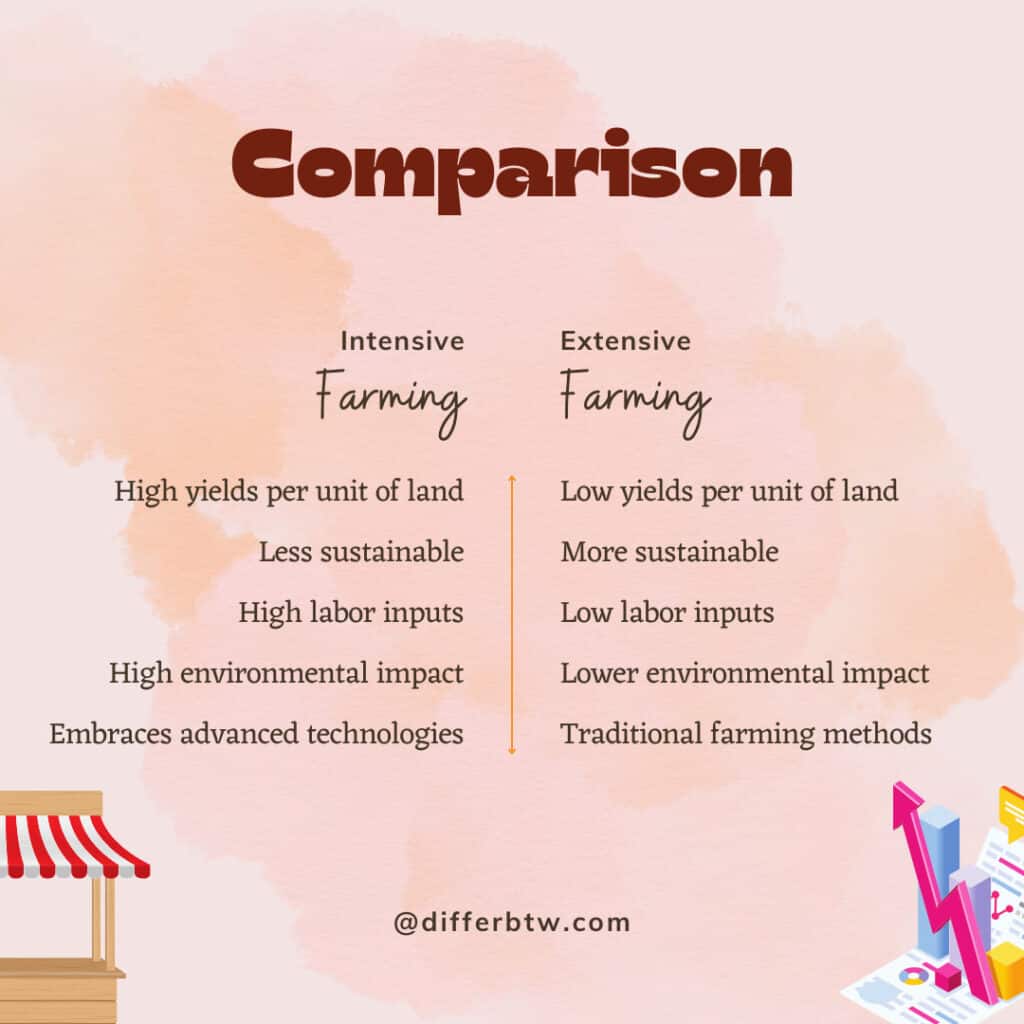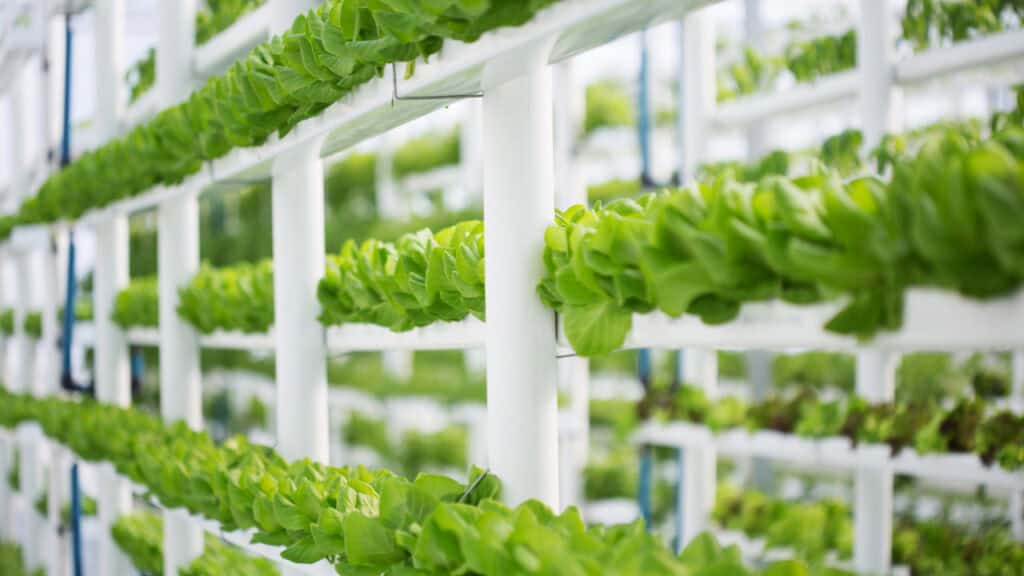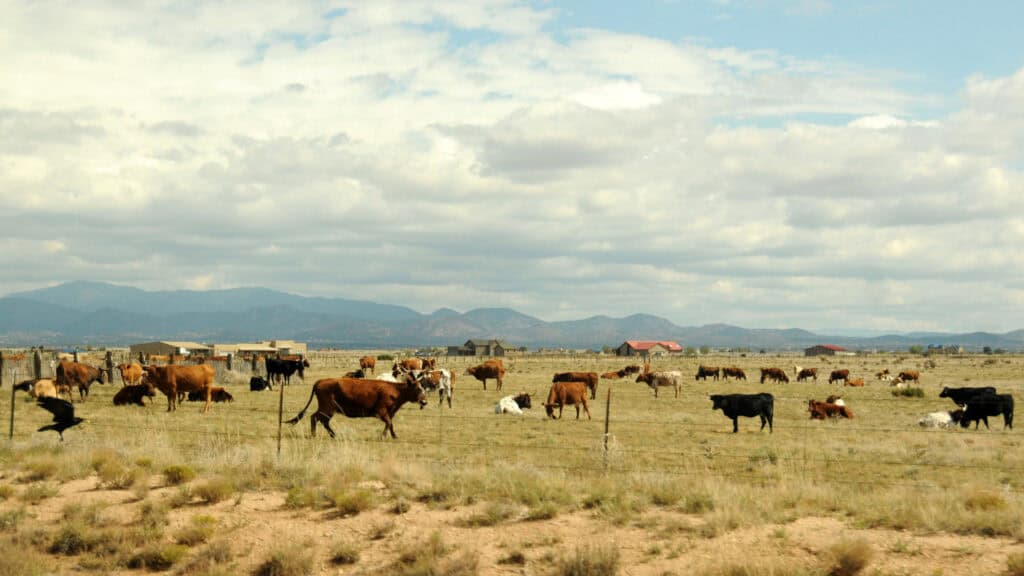Intensive and extensive farming represent two distinct approaches to agriculture, each with its unique set of characteristics. Intensive farming involves maximizing production on a smaller land area by employing advanced technologies, high-yield crop varieties, and intensive labor. It’s like the high-octane race car of agriculture, squeezing every bit of output from limited space. On the other hand, extensive farming covers larger expanses of land with lower inputs, relying on natural processes and traditional methods.
It’s the slow and steady tortoise, spreading out to harness the vastness of nature. The ongoing debate between these two methods reflects the age-old struggle of efficiency versus sustainability in our quest to feed a growing global population.

Comparison Chart
| Feature | Intensive Farming | Extensive Farming |
|---|---|---|
| Land Use | Small land area | Large land area |
| Inputs | High inputs: labor, fertilizers, pesticides, machinery, improved breeds | Low inputs: labor, fertilizers, pesticides, machinery, traditional breeds |
| Yield | High yields per unit of land | Low yields per unit of land |
| Production focus | High-value crops, livestock | Low-value crops, livestock |
| Management | High level of management | Low level of management |
| Environmental Impact | High potential for environmental damage (soil depletion, water pollution) | Lower environmental impact |
| Sustainability | Can be less sustainable in the long term | Can be more sustainable in the long term |
| Suitability | Densely populated areas, high market demand | Low-population density areas, low land prices |
| Examples | Monoculture cropping (e.g., corn, wheat), confined animal feeding operations (CAFOs) | Free-range livestock, pasture-based dairy farming |
Similarities Between Intensive Farming and Extensive Farming
Environmental Impact
Soil Management: Intensive farming and extensive farming share concerns related to soil management. In both systems, soil degradation can occur due to excessive use of agrochemicals in intensive farming or overgrazing in extensive farming. Implementing sustainable practices is vital for maintaining soil health in both approaches.
Water Usage: Both farming methods contribute to water resource challenges. Intensive farming involves irrigation systems, leading to water scarcity concerns, while extensive farming may impact water quality through runoff and overgrazing near water sources.
Technological Integration
Machinery and Technology: Both intensive and extensive farming have witnessed technological advancements. Intensive farming employs modern machinery, precision farming techniques, and genetically modified organisms (GMOs) to enhance productivity. Extensive farming may also integrate technology, such as improved pasture management and selective breeding, to optimize production.
Pest and Disease Management: Similarities exist in the management of pests and diseases. While intensive farming relies on pesticides and chemical treatments, extensive farming employs strategies like rotational grazing and natural predator introduction to control pests and diseases.
What is Intensive Farming?
Intensive farming, also known as industrial or high-input agriculture, is a modern agricultural approach characterized by maximizing production efficiency through the use of advanced technology, high levels of input, and optimized land management. This method aims to achieve high yields and profits by intensively utilizing resources such as water, fertilizers, pesticides, and machinery.
Key Features of Intensive Farming
- High Input Utilization: Intensive farming relies on the extensive use of inputs, including synthetic fertilizers, pesticides, and herbicides. These inputs are carefully calibrated to meet the specific needs of crops and enhance productivity.
- Mechanization and Technology: The adoption of advanced machinery and technology is a hallmark of intensive farming. Tractors, combine harvesters, and automated irrigation systems contribute to increased efficiency and reduced labor requirements.
- Crop Rotation and Multiple Cropping: Intensive farming involves the practice of crop rotation and multiple cropping to optimize land use and maintain soil fertility. This helps prevent soil degradation and nutrient depletion.
Benefits of Intensive Farming
- High Yields: The primary goal of intensive farming is to achieve maximum output per unit of land. By carefully managing inputs and employing advanced techniques, farmers can obtain significantly higher yields compared to traditional farming methods.
- Profitability: The increased productivity associated with intensive farming can lead to higher profits for farmers. This economic viability is attractive to agricultural practitioners and investors alike.
- Year-Round Production: With the use of greenhouses and controlled environments, intensive farming enables year-round production of certain crops. This constant supply helps meet consumer demand and enhances market competitiveness.
Challenges and Concerns
- Environmental Impact: Intensive farming is criticized for its environmental consequences. Excessive use of agrochemicals can lead to soil and water pollution, impacting ecosystems and biodiversity.
- Resource Depletion: The intensive use of water, fertilizers, and other resources can lead to their depletion and contribute to long-term sustainability concerns. Efficient resource management practices are crucial to mitigate these issues.
- Biodiversity Loss: The use of monoculture and the elimination of natural habitats to make way for large-scale farms can result in the loss of biodiversity. This poses risks to ecosystems and disrupts the balance of local flora and fauna.

Examples of Intensive Farming
- Crop Rotation:
- This method involves growing different crops in the same area in sequential seasons to improve soil fertility and reduce pest and disease problems.
- Greenhouse Cultivation:
- Greenhouses provide a controlled environment for crops, allowing year-round cultivation. This method enhances crop quality and accelerates growth.
- Hydroponics:
- Hydroponic systems involve growing plants without soil, using nutrient-rich water solutions. This method maximizes resource efficiency and allows for precise control over plant nutrients.
- Use of High-Yield Varieties:
- Intensive farming employs genetically modified or selectively bred high-yield crop varieties to increase productivity and overall crop output.
- Precision Farming:
- Precision farming utilizes technology, such as GPS-guided tractors and drones, to optimize various aspects of farming, including planting, irrigation, and fertilization. This helps improve efficiency and reduce resource wastage.
What is Extensive Farming?
Extensive farming is an agricultural practice characterized by the large-scale cultivation of vast land areas with minimal inputs and labor. This approach contrasts with intensive farming, which focuses on maximizing yields within smaller spaces. Extensive farming aims to utilize abundant land resources efficiently, relying on natural processes and lower levels of technology. Let’s delve into the various aspects of extensive farming.
1. Characteristics of Extensive Farming
Extensive farming involves the cultivation of large fields or pastures, where crops or livestock are raised extensively. This method is associated with regions having ample available land, such as prairies, steppes, or savannas. The primary characteristics include low labor intensity, large land holdings, and a reliance on natural fertility and processes.
2. Crop Cultivation in Extensive Farming
In extensive crop cultivation, farmers plant crops with minimal interference in the natural ecosystem. This may involve practices such as low-density planting, where crops are spaced farther apart to reduce competition for resources. The reliance on rainfall for irrigation and minimal use of fertilizers and pesticides are common traits of extensive crop farming.
3. Livestock in Extensive Farming
Extensive livestock farming is prevalent in regions where large grazing areas are available. Livestock, such as cattle, sheep, or goats, roam freely over expansive pastures, obtaining their feed from natural vegetation. This practice is in contrast to intensive livestock farming, where animals are confined in smaller spaces and provided with formulated feed.
4. Advantages of Extensive Farming
- Cost-Effective: Extensive farming tends to have lower input costs, as it relies on natural processes and requires less labor.
- Preservation of Biodiversity: The extensive use of large land areas allows for the preservation of natural ecosystems and biodiversity.
- Sustainable Resource Use: Extensive farming aligns with sustainable resource use, as it relies on the natural fertility of the land and minimizes the use of artificial inputs.
5. Challenges and Criticisms
- Lower Yields: One of the main criticisms of extensive farming is its lower yield per unit area compared to intensive farming.
- Land Degradation: Continuous use of extensive farming without proper land management can lead to soil degradation and loss of fertility.
- Environmental Impact: While it may preserve biodiversity, extensive farming can have environmental consequences if not practiced sustainably, such as habitat destruction and overgrazing.
6. Sustainable Practices in Extensive Farming
Implementing sustainable practices in extensive farming can mitigate some of its challenges. These may include rotational grazing, agroforestry, and soil conservation techniques to maintain soil fertility and prevent land degradation.

Examples of Extensive Farming
- Nomadic Herding:
- Nomadic herding involves moving livestock across large areas in search of grazing land. This method is common in arid regions and relies on extensive land use.
- Shifting Agriculture:
- Shifting agriculture, also known as slash-and-burn farming, involves clearing land for cultivation and moving to a new area once the soil fertility declines. This method relies on large land areas.
- Pastoral Farming:
- Pastoral farming focuses on raising grazing livestock, such as cattle or sheep, on vast tracts of land. The animals are allowed to roam freely for grazing.
- Extensive Grain Farming:
- Extensive grain farming involves large-scale cultivation of crops like wheat, barley, or oats over extensive areas, with minimal inputs and mechanization.
- Ranching:
- Ranching involves raising livestock, particularly cattle, over large areas of land. Ranches are expansive and rely on natural vegetation for the animals’ grazing needs.
Difference Between Intensive Farming and Extensive Farming
Scale of Operation:
- Intensive Farming: Involves a high level of input and management on a relatively small land area.
- Extensive Farming: Operates on a larger land area with lower inputs and management per unit of land.
Land Use:
- Intensive Farming: Maximizes land use efficiency through high-density cultivation and advanced farming techniques.
- Extensive Farming: Requires more land for cultivation, with lower planting densities.
Labor Requirements:
- Intensive Farming: Typically requires more labor due to the precise and hands-on management practices involved.
- Extensive Farming: Involves fewer labor demands as the farming practices are less intricate.
Crop Variety:
- Intensive Farming: Allows for the cultivation of a wide variety of crops in a limited space.
- Extensive Farming: Often focuses on a smaller range of crops due to the larger land area involved.
Input Intensity:
- Intensive Farming: Uses high inputs such as fertilizers, pesticides, and water to achieve maximum yield.
- Extensive Farming: Relies on natural processes and requires fewer inputs per unit of land.
Environmental Impact:
- Intensive Farming: May have a higher environmental impact due to the use of synthetic chemicals and the concentration of resources.
- Extensive Farming: Generally has a lower environmental impact, but can still lead to habitat destruction and soil degradation if not managed sustainably.
Yield per Unit Area:
- Intensive Farming: Aims for high yields per unit area through careful management and optimization of resources.
- Extensive Farming: Yields per unit area are lower compared to intensive farming.
Technology Adoption:
- Intensive Farming: Embraces advanced technologies such as precision farming, hydroponics, and genetic engineering.
- Extensive Farming: Relies more on traditional farming methods and may not incorporate as much high-tech equipment.
Risk and Resilience:
- Intensive Farming: More susceptible to external factors such as weather fluctuations and market changes due to the high investment and specialization.
- Extensive Farming: Often exhibits greater resilience as it is less dependent on specific inputs and technologies.
Economic Considerations:
- Intensive Farming: Tends to have higher upfront costs but may generate more revenue per unit of land.
- Extensive Farming: Involves lower initial investments but may require larger land areas to achieve comparable profits.
My Pick and Reasons: Why I Like Intensive farming
If I were to choose between Intensive Farming and Extensive Farming, I’d lean towards Intensive Farming. Why? Well, let me break it down for you.
Higher Yields, Less Space
Intensive Farming is like the efficiency maestro of agriculture. It maximizes yield in a limited space. Imagine getting more crops per square foot – it’s like a magic trick for your harvest. With the growing global population, producing more food in less space is a no-brainer.
Year-Round Productivity
One of the perks of Intensive Farming is its ability to keep the farm buzzing year-round. Through technologies like greenhouses and controlled environments, you’re not bound by seasons. Fresh tomatoes in the dead of winter? Yes, please!
Precision and Technology
Intensive Farming is like the high-tech guru of the farming world. From automated irrigation systems to precision farming using drones, it’s all about using technology to optimize every aspect. This not only boosts productivity but also helps in resource management – a win for both the farmer and the environment.